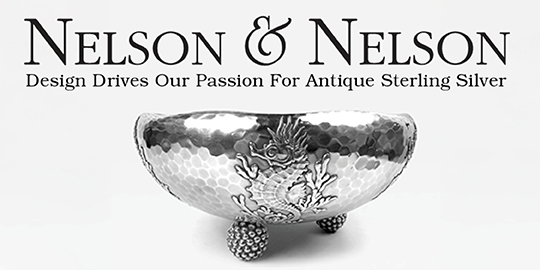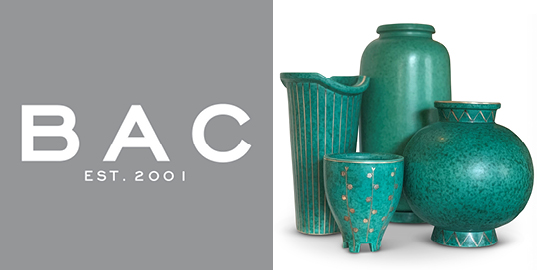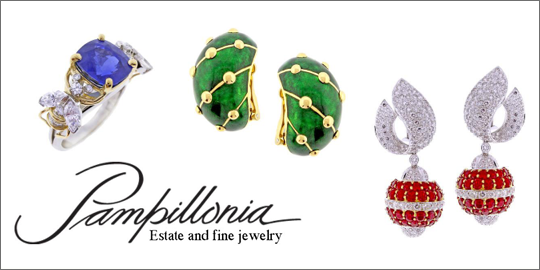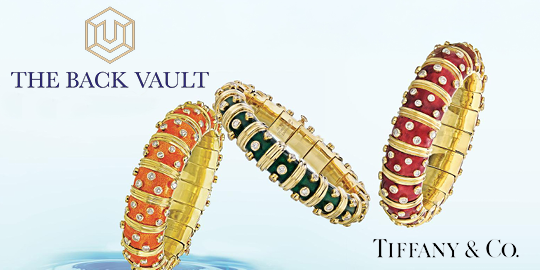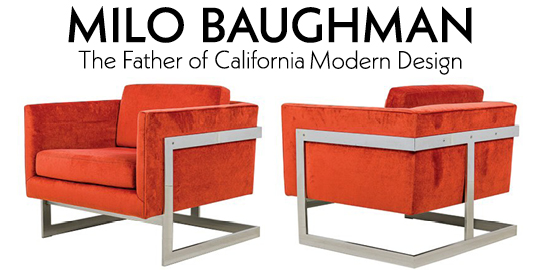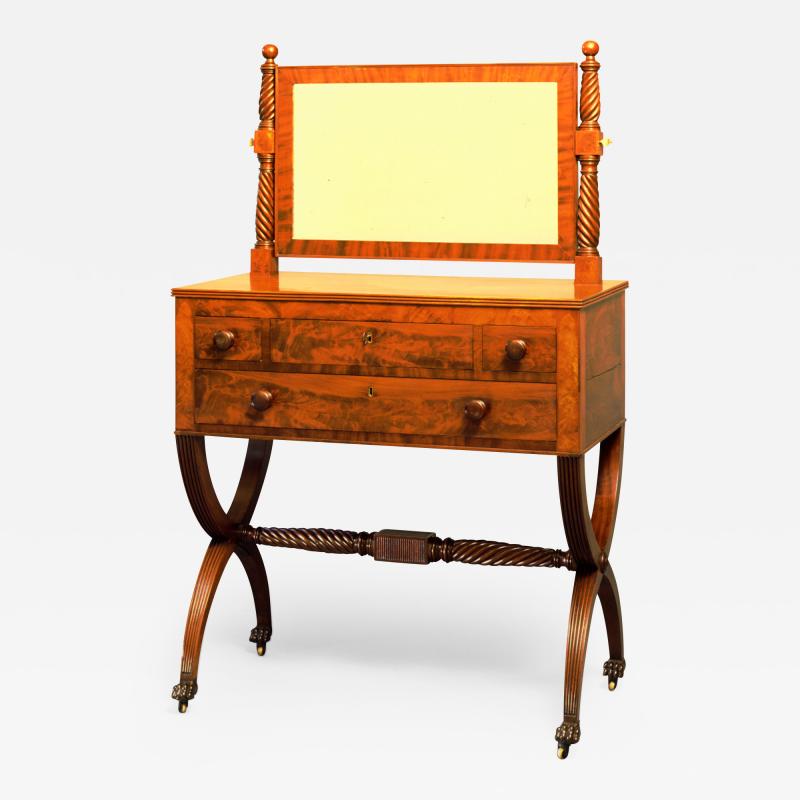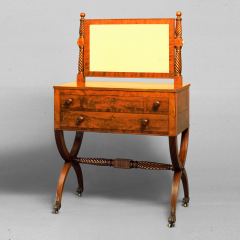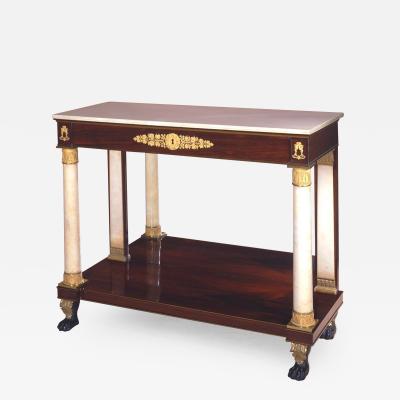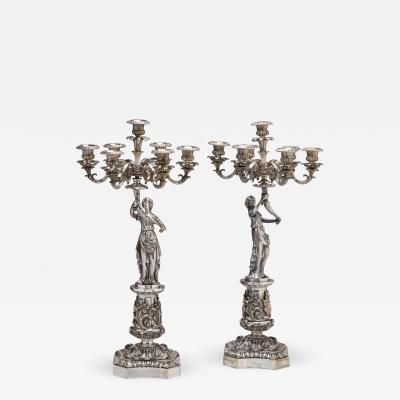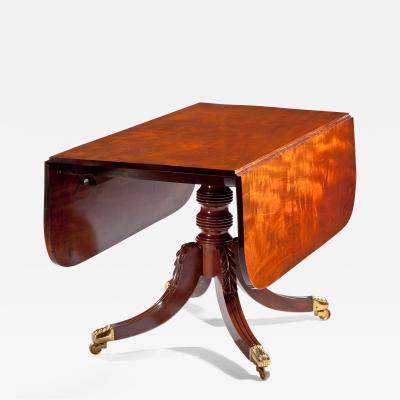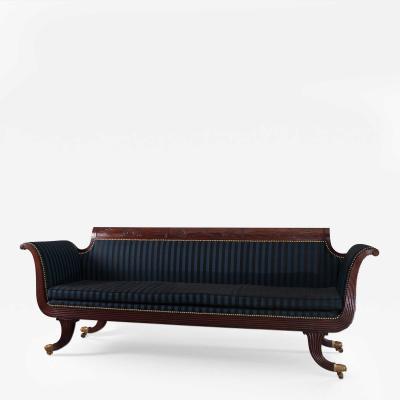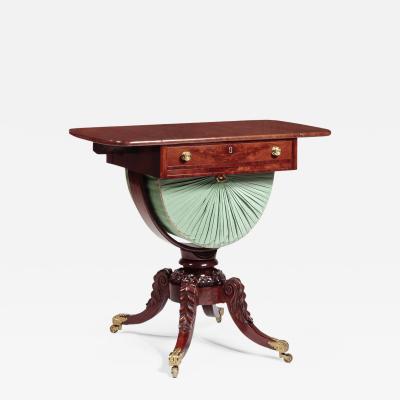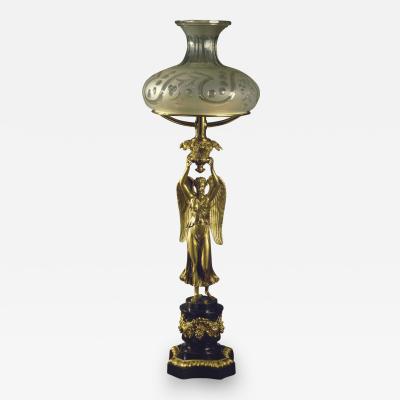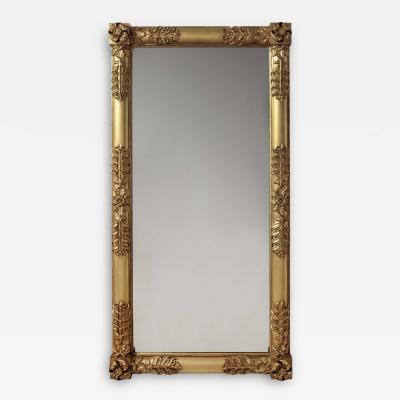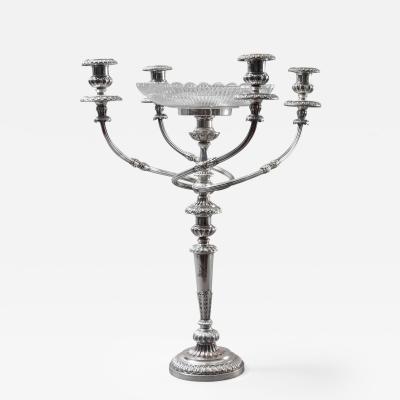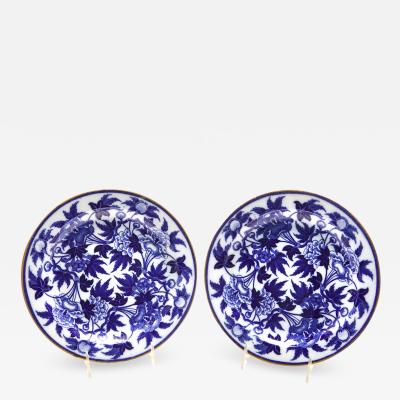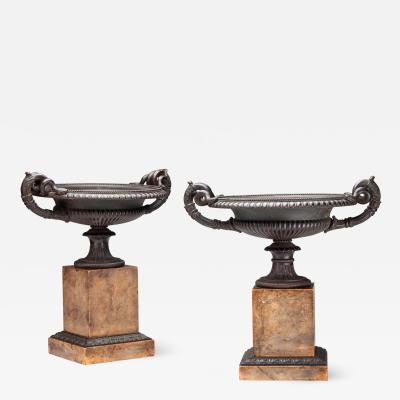Extremely Fine & Rare Curule-Base Mahogany Dressing Bureau, c. 1810-1815
-
Description
The rectangular mirror in a cross banded frame supported by reverse-twist rope-turned columns with ball finials over an oblong top with reeded edge on a conforming case with three short drawers over one long drawer flanked by inlaid dyes with gothic archs, raised on reeded curule legs with carved paw feet and castors, the legs joined with a reverse-twist rope- turned stretcher centering a reeded block.
The curule or X form base, referred to in early 19th Century English and French design directories as "Grecian" from the form of a Grecian cross, and seating depicted on ancient Greek vases excavated in the 18th century, derives its name from the Roman "sella curulis." Adapted early in the 19th Century, designers and arbiters of taste Pierre de la Mésangère, Thomas Sheraton, Percier and Fontaine, Thomas Hope, George Smith and Rudolph Ackerman all explored versions of curule-base furniture. It is likely that this dressing bureau was inspired by plate xx in Hope’s 1807 Household Furniture, #3 and 4.
Duncan Phyfe is also believed to have made furniture in this style including a large group of chairs, stools and sofas because of a sketch of a curule-base chair on the back side of an 1815 invoice from Phyfe to Charles Bancker. Phyfe is also believed to have made suites of curule-base seating for the Pearsall and Prime families of New York. A related dressing table without a mirror is pictured in Nancy McClelland, Duncan Phyfe and the English Regency (New York, 1939) plate 153. A very closely related piece as well as the Prime family curule-base sofa, attributed to Phyfe, are in the collection at Boscobel Restoration and are pictured in Berry B. Tracy, Federal Furniture and Decorative Arts at Boscobel (New York, 1981) plate 61.
Provenance: Mrs. E. P. Brundage, Baltimore, Maryland -
More Information
Origin: United States Period: 19th Century Condition: Excellent. one rear foot appears to be a recarved/ minor restoration to end of stretcher/ drawer knobs are period replacements. Creation Date: 1810-1815 Styles / Movements: Classical, Traditional Book References: Edgar G. Miller, Jr., American Antique Furniture (New York: M.Burrows & Company, 1937) vol. 1, page 417, figure 755. Catalog References: Carswell Rush Berlin, 'Solid and Permanent Grandeur': The Design Roots of American Classical Furniture, International Fine Art and Antique Dealers Show Catalog (2002), p. 17-26. Dealer Reference #: C-952261 Incollect Reference #: 104946 -
Dimensions
W. 37 in; H. 55 in; D. 19 in; W. 93.98 cm; H. 139.7 cm; D. 48.26 cm;
Message from Seller:
Welcome to Carswell Rush Berlin Antiques, a premier New York City-based dealer specializing in American antique furniture and decorative accessories from the Classical period (1800-1840). For inquiries, please contact us at 646.645.0404 or email carswellberlin@msn.com.







